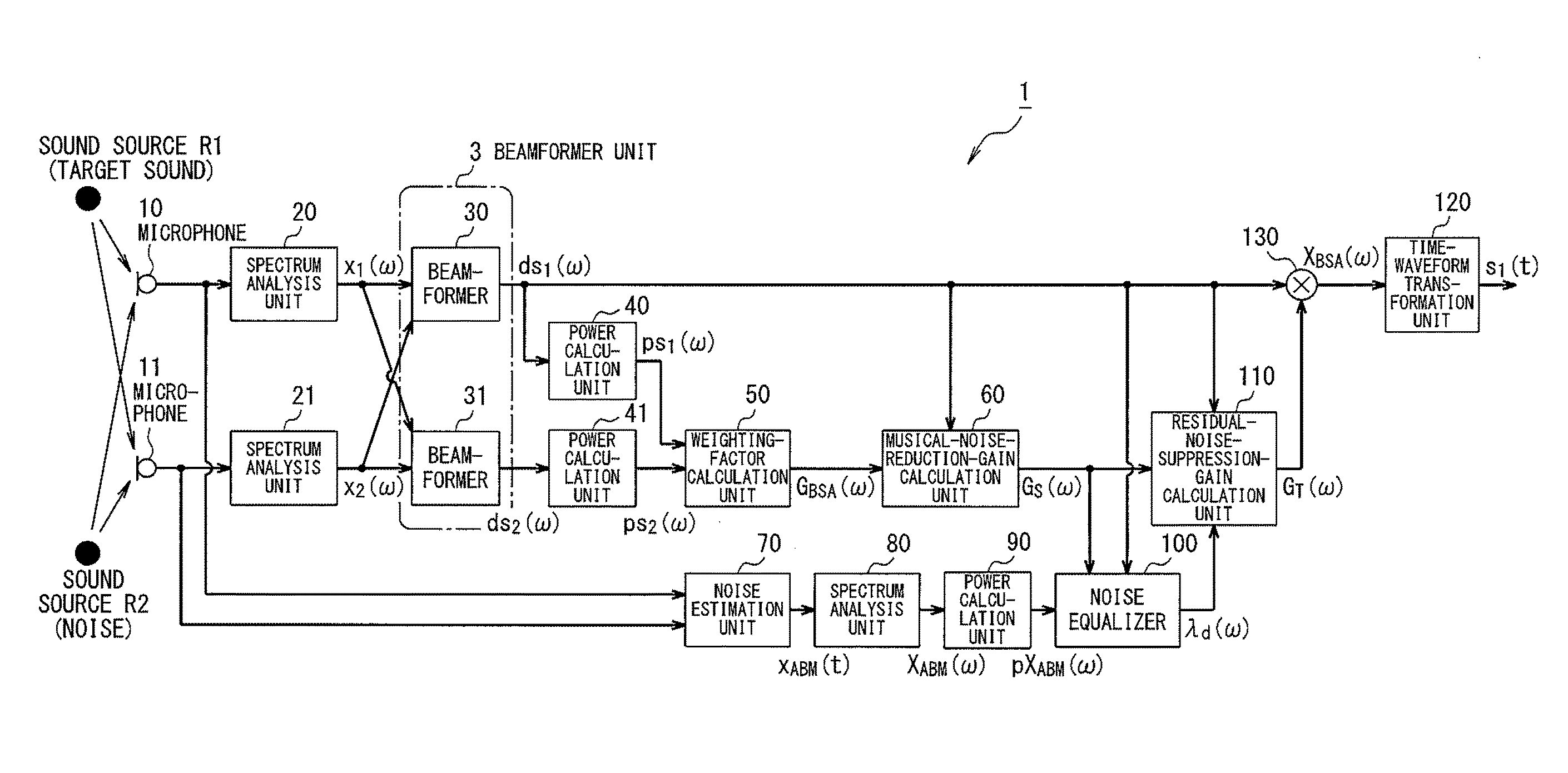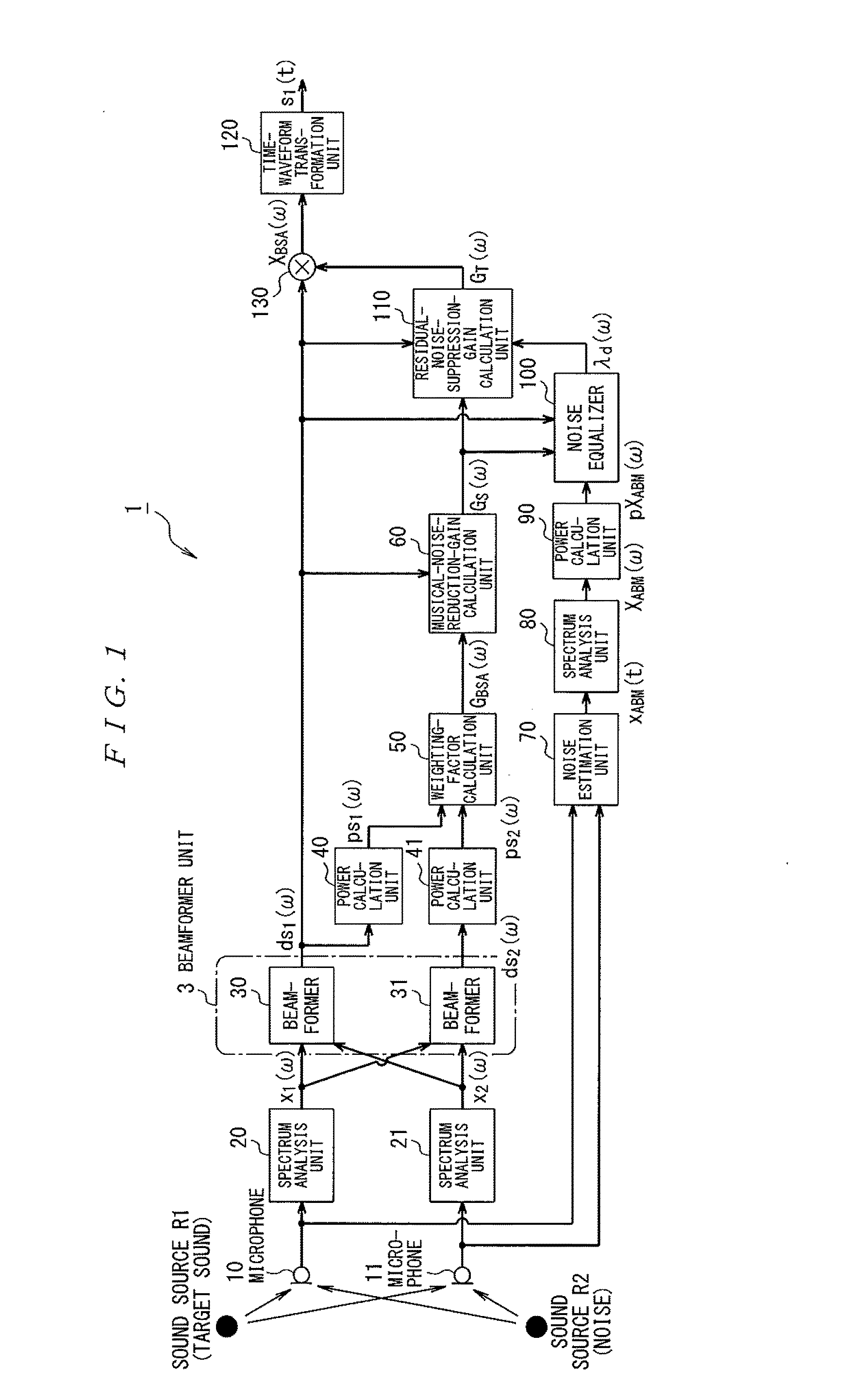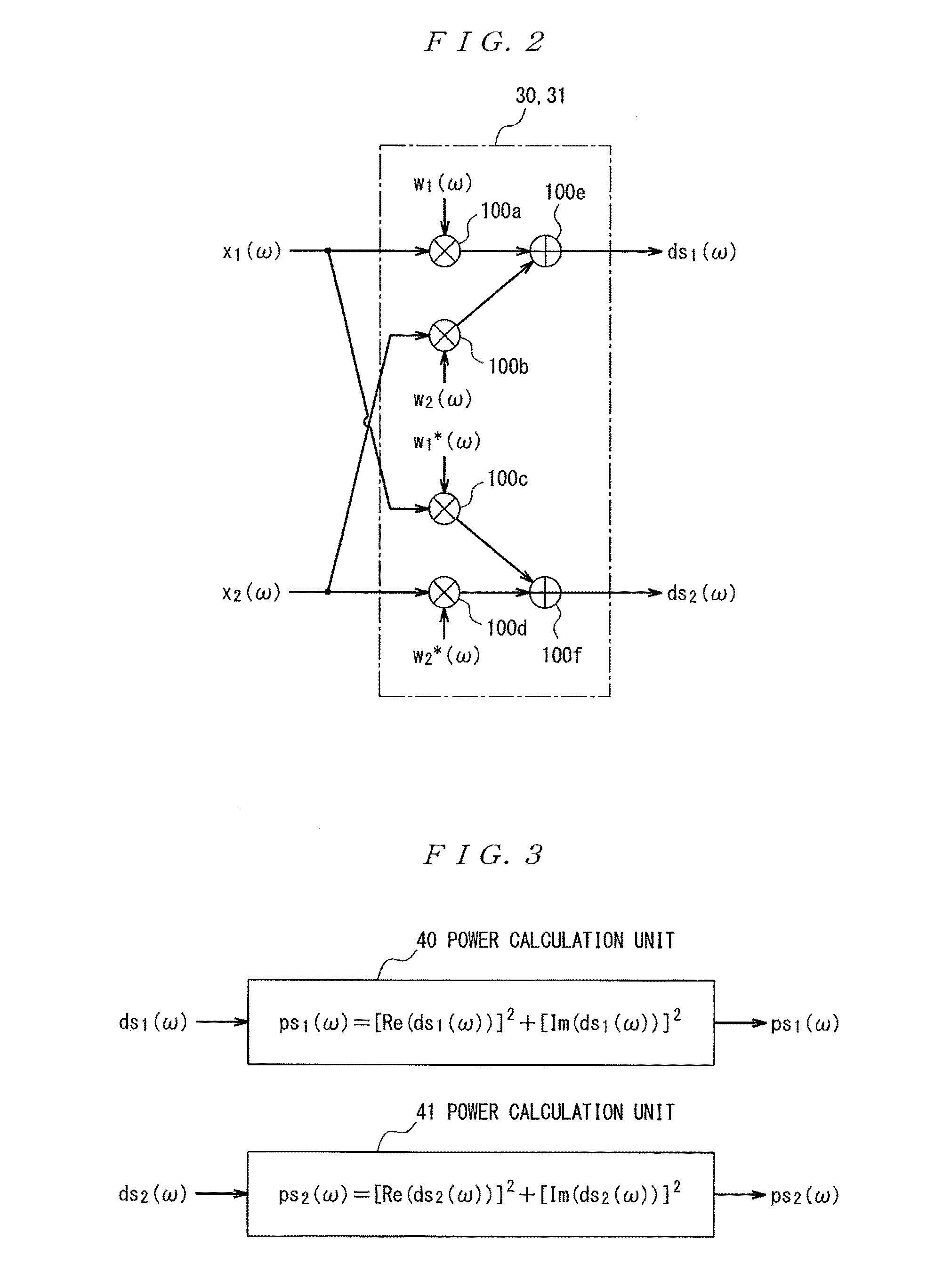Sound source separation device, sound source separation method and program
a separation device and sound source technology, applied in speech analysis, signal processing, ear treatment, etc., can solve the problems of excessive suppression of target sound, large difference in sound level of noise input to both microphones and phase difference thereof, and becoming musical noises, etc., to achieve the effect of suppressing a generation of musical noises
- Summary
- Abstract
- Description
- Claims
- Application Information
AI Technical Summary
Benefits of technology
Problems solved by technology
Method used
Image
Examples
first embodiment
[0045]FIG. 1 is a diagram showing a basic configuration of a sound source separation system according to a first embodiment. This system includes two micro-phones (hereinafter, referred to as “microphones”) 10 and 11, and a sound source separation device 1. The explanation will be given below for the embodiment in which the number of the microphones is two, but the number of the microphones is not limited to two as long as at least equal to or greater than two microphones are provided.
[0046]The sound source separation device 1 includes hardware, not illustrated, such as a CPU which controls the whole sound source separation device and which executes arithmetic processing, a ROM, a RAM, and a storage device like a hard disk device, and also software, not illustrated, including a program and data, etc., stored in the storage device. Respective functional blocks of the sound source separation device 1 are realized by those hardware and software.
[0047]The two microphones 10 and 11 are p...
second embodiment
[0109]FIG. 9 is a diagram showing a basic configuration of a sound source separation system according to a second embodiment of the present invention. The feature of the sound source separation system of this embodiment is to include a control unit 160. The control unit 160 controls respective internal parameters of the noise estimation unit 70, the noise equalizer 100, and the residual-noise-suppression-gain calculation unit 110 based on the weighting factor GBSA(ω) across the entire frequency band. Example internal parameters are a step size of the adaptive filter, a spectrum floor value β of the weighting factor GBSA(ω), and a noise quantity of estimated noises.
[0110]More specifically, the control unit 160 executes following processes. For example, an average value of the weighting factor GBSA(ω) across the entire frequency band is calculated. If such an average value is large, it is possible to make a determination that a sound presence probability is high, so that the control u...
third embodiment
[0117](First Configuration)
[0118]FIG. 11 shows an illustrative basic configuration of a sound source separation system according to a third embodiment of the present invention.
[0119]A sound source separation device 1 of the sound source separation system shown in FIG. 11 includes a spectrum analyze units 20 and 21, beamformers 30 and 31, power calculation units 40 and 41, a weighting-factor calculation unit 50, a weighting-factor multiplication unit 310, and a time-waveform transformation unit 120. The configuration other than the weighting-factor multiplication unit 310 is consistent with the configurations of the above-explained other embodiments.
[0120]The weighting-factor multiplication unit 310 multiplies a signal ds1(ω) obtained by the beamformer 30 by a weighting factor calculated by the weighting-factor calculation unit 50.
[0121](Second Configuration)
[0122]FIG. 12 is a diagram showing another illustrative basic configuration of a sound source separation system according to th...
PUM
 Login to View More
Login to View More Abstract
Description
Claims
Application Information
 Login to View More
Login to View More - R&D
- Intellectual Property
- Life Sciences
- Materials
- Tech Scout
- Unparalleled Data Quality
- Higher Quality Content
- 60% Fewer Hallucinations
Browse by: Latest US Patents, China's latest patents, Technical Efficacy Thesaurus, Application Domain, Technology Topic, Popular Technical Reports.
© 2025 PatSnap. All rights reserved.Legal|Privacy policy|Modern Slavery Act Transparency Statement|Sitemap|About US| Contact US: help@patsnap.com



